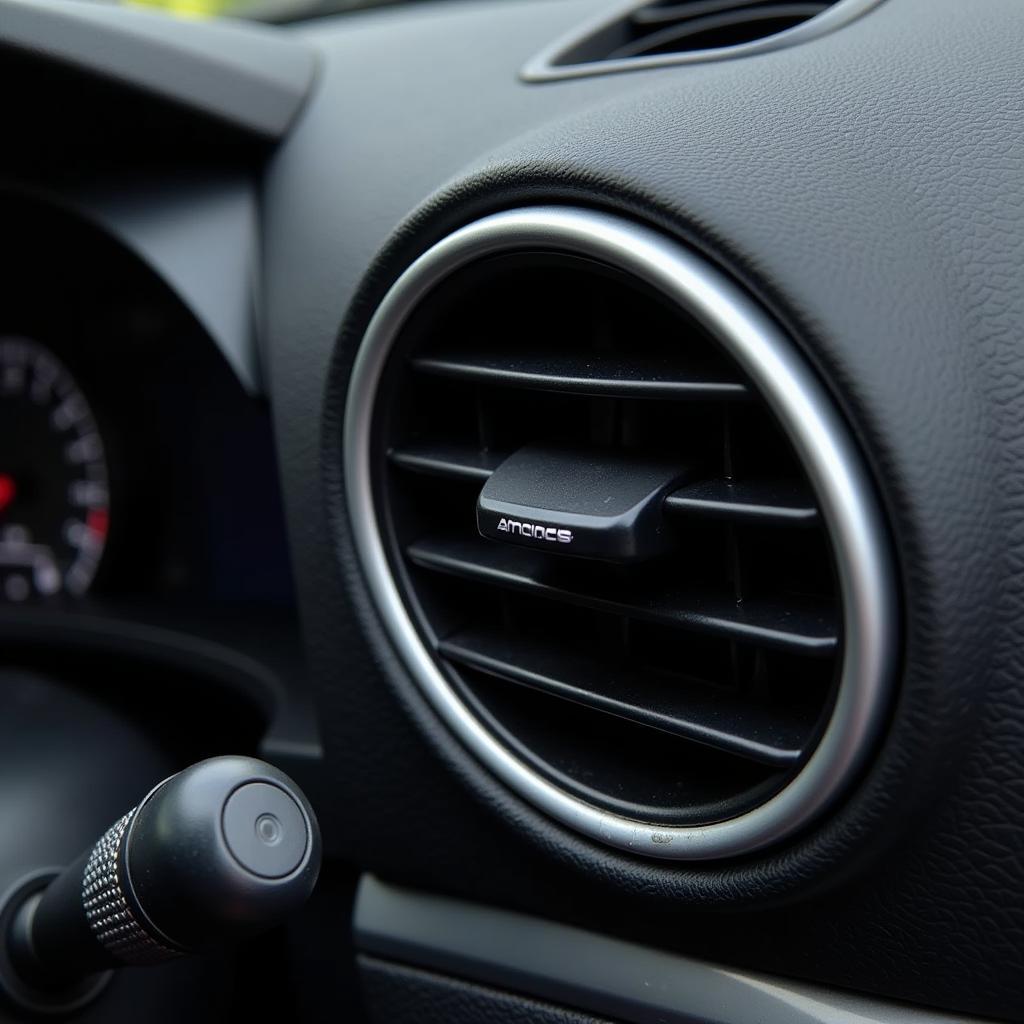Fixing a malfunctioning air vent control in your car can be easier than you think. Whether it’s stuck on one setting, blowing inconsistently, or not working at all, this guide will walk you through the most common causes and solutions. Understanding the basics of your car’s ventilation system can save you a trip to the mechanic and keep you comfortable on the road.
A broken blend door actuator is a common culprit for air vent issues. These small motors control the direction and temperature of the airflow. If you’re experiencing issues with air temperature or direction, this could be the source of your problem. After the opening paragraph, it’s a good time to discuss another common cause, a faulty control panel. A malfunctioning control panel can cause a range of problems, from unresponsiveness to erratic behavior. fix car dent compressed air Sometimes, simple solutions like checking the fuses can resolve the issue quickly.
Diagnosing the Problem: Where to Start
Before you start tearing apart your dashboard, it’s crucial to diagnose the problem correctly. Start by checking the simplest things first: is the car turned on? Is the blower motor working at all? If the blower motor isn’t functioning, the issue could be a blown fuse, a bad relay, or even a faulty blower motor itself.
Checking Fuses and Relays
Locate your car’s fuse box (usually under the dashboard or in the engine compartment) and consult your owner’s manual to identify the fuse related to the HVAC system. If the fuse is blown, replace it with a new one of the same amperage. Similarly, the relay can also be a point of failure. Try swapping the HVAC relay with another identical relay in the fuse box to see if that resolves the issue.
Inspecting the Control Panel
Next, examine the control panel for any obvious signs of damage, loose connections, or burnt components. Sometimes, a simple cleaning with compressed air can resolve the issue. If the control panel itself is damaged, it might need to be replaced. For more complex electrical issues, it’s best to consult a qualified auto electrician.
Addressing Common Issues: Step-by-Step Guide
Once you’ve narrowed down the problem area, you can start addressing the specific issue. Here’s a step-by-step guide for some of the most common air vent control problems:
-
Stuck Blend Door Actuator: If you suspect a faulty blend door actuator, you’ll likely need to access it behind the dashboard. This might involve removing some trim panels or even parts of the dashboard itself. Consult a repair manual for your specific car model. Once you’ve located the actuator, try manually moving the blend door to see if it’s stuck. If it is, the actuator may need to be replaced.
-
Faulty Control Panel: If the control panel is the problem, you might need to replace it. This can sometimes be a straightforward swap, but it may also involve disconnecting various wiring harnesses. Again, refer to your repair manual for specific instructions.
-
Blown Fuse or Relay: Replacing a blown fuse or relay is usually a simple fix. Just locate the correct fuse or relay in the fuse box and replace it with a new one. Fixing dent in car with compressed air Always use the correct amperage for the replacement fuse.
“A simple issue like a blown fuse can often be overlooked,” says John Miller, a certified automotive technician with over 20 years of experience. “Always start with the basics before assuming the worst.”
Maintaining Your Car’s Air Vent System
Regular maintenance can prevent many air vent control problems. Here are a few tips to keep your system running smoothly:
- Regularly replace your cabin air filter.
- Have your HVAC system inspected during routine maintenance.
- Avoid blocking air vents with objects.
“Preventative maintenance is key to avoiding costly repairs down the road,” adds Maria Sanchez, an automotive engineer with a focus on climate control systems. “Regularly checking your system can prevent small issues from becoming major problems.” how to fix a car dent with compressed air It’s important to take care of your vehicle’s ventilation system.
Conclusion: Keeping Your Air Flowing Smoothly
Fixing air vent control issues in your car can range from simple to complex. By following this guide, you can diagnose the problem and potentially fix it yourself. Remember to always consult your car’s repair manual for specific instructions. If you’re unsure about anything, don’t hesitate to contact a qualified mechanic. Keeping your air vent control working properly ensures a comfortable and enjoyable driving experience. Contact AutoTipPro at +1 (641) 206-8880 or visit our office at 500 N St Mary’s St, San Antonio, TX 78205, United States for assistance with your car maintenance and repair needs.
 Clean Car Air Vents for Optimal Performance
Clean Car Air Vents for Optimal Performance
FAQ
-
Why is my car’s AC blowing hot air? This could be due to a low refrigerant level, a faulty compressor, or a problem with the blend door actuator.
-
How do I reset my car’s air conditioning system? Sometimes, disconnecting the battery for a few minutes can reset the system. Consult your owner’s manual for specific instructions.
-
How often should I change my cabin air filter? It’s generally recommended to change the cabin air filter every 12,000 to 15,000 miles, or at least once a year.
-
Can I fix a stuck blend door actuator myself? Yes, but it can be a challenging repair, especially if you’re not familiar with working on cars.
-
How much does it cost to fix air vent control in a car? The cost can vary depending on the problem and the make and model of your car.
-
What are the signs of a failing blower motor? Signs include weak airflow, unusual noises coming from the vents, or no airflow at all.
-
How can I prevent air vent control problems? Regular maintenance, such as changing the cabin air filter and having the system inspected, can help prevent problems.




Leave a Reply